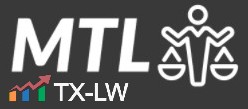Divorce is a stressful situation. It is one where people do not always act as they should. This includes taking actions that caused or led up to the divorce. Right or wrong, the shared finances of marriage often come into play. This results in additional marital disputes.
Innocent spouse relief can provide a much-needed remedy for divorced or separated taxpayers who filed a joint income tax return. This relief is commonly granted where the income that gave rise to the tax liability was earned by one spouse.
The recent Mapp v. Commissioner, T.C. Summary Opinion 2008-76, case provides an opportunity to consider these rules.
Contents
Facts & Procedural History
Mr. and Mrs. Mapp were married in 1980. They divorced in 2003. Their separation agreement specified that each of the spouses would be liable for income taxes on their income.
Mr. Mapp was a self-employed truck driver. In tax year 2000, Mr. Mapp worked for two trucking companies with similar names: Cornerstone Transportation, Atlanta and Cornerstone Transportation, South Carolina. Each corporate entity issued him a separate Form 1099.
The tax return preparer at H&R Block considered the Forms 1099 as duplicates and only included the income from one of the forms when preparing Mr. and Mrs. Mapps’ federal income tax return for the 2000 tax year. Mr. Mapp noticed the error but hoped the IRS would not notice it.
In the tax year 2002, Mr. Mapp did not remit sufficient estimated tax payments–which resulted in a tax balance being due.
Mrs. Mapp worked as a nurse and her income was reported on the couple’s federal income tax returns for tax years 2000 and 2002.
The IRS adjusted the 2000 and 2002 tax returns and issued a notice of deficiency to both Mr. and Mrs. Mapp.
Mrs. Mapp filed a request for innocent spouse relief, which the IRS denied. Mrs. Mapp petitioned the U.S. Tax Court to ask it to review her innocent spouse’s relief. Mr. Mapp intervened in the court proceeding.
Types of Innocent Spouse Relief
There are three types of innocent spouse relief. One type provides full or apportioned relief from joint and several liabilities (Section 6015(b)). The second type provides proportionate tax relief to divorced or separated taxpayers (Section 6015(c)). The third type provides equitable relief from joint and several liabilities in certain circumstances if relief is not available under the other two types (Section 6015(f)). The second and third types were at issue in this case.
Divorce or Separation Relief
The second type of innocent spouse relief is an election. The election under Section 6015(c) treats the former spouses as if they had filed separate returns, and each spouse’s liability is limited to that portion of the deficiency properly allocable to the electing spouse.
Under Section 6015(c), a requesting spouse may elect to allocate a deficiency if the following four conditions are met:
- a joint return was filed;
- at the time of the election, the requesting spouse is no longer married to the non-requesting spouse;
- the requesting spouse elects the application of Section 6015(c) no later than two years after the date on which collection activities have begun; and
- the deficiency remains unpaid. The requesting spouse must not have actual knowledge of “any item giving rise to a deficiency” which is not allocable to the requesting spouse.
The court concluded that Mrs. Mapp qualified for the second type of innocent spouse relief for the 2000 tax year. This was based in large part on Mr. Mapp’s testimony.
Equitable Relief
The court also considered the third type of innocent spouse relief for the 2002 tax year. There are a number of requirements to qualify for this type of relief.
The third type of innocent spouse relief, which is described in Section 6015(f)(1), provides that a taxpayer may be relieved from joint and several liabilities if it is determined, after considering all the facts and circumstances, that it is inequitable to hold the taxpayer liable for the unpaid tax or deficiency.
Rev. Proc. 2003-61,5 sec. 4.01, 2003-2 C.B. 296, 297, sets forth seven threshold conditions that the requesting spouse must satisfy before the Commissioner will consider a request for relief under Section 6015(f). Rev. Proc. 2003-61, sec. 4.03, lists several factors to be evaluated for requests for relief under Section 6015 for spouses who filed a joint return (and have met the threshold conditions for relief under Section 6015(f)) but do not qualify for relief under Rev. Proc. 2003-61, Sec. 4.02.
The nonexclusive list of factors to be considered includes:
- marital status;
- economic hardship;
- no knowledge or reason to know of the item giving rise to the deficiency;
- whether the nonrequesting spouse had a legal obligation to pay the liability;
- whether the requesting spouse benefited significantly from the item giving rise to the deficiency; and
- whether the requesting spouse has made a good faith attempt to comply with the tax laws in subsequent years.
Rev. Proc. 2003-62, Sec. 4.03(2)(a).
The court concluded that Mrs. Mapp qualified for the third type of innocent spouse relief for the 2002 tax year. This decision was based, in part, on a belief that Mrs. Mapp was not aware of the estimated tax shortfall in 2002. Thus, the court found that it would be inequitable to hold her liable for the shortfall.
The Takeaway
The court granted the requesting spouse innocent spouse relief for the non-requesting spouse’s compensation that was not reported on the timely-filed income tax return and for the balance resulting from insufficient estimated tax payments. This prevents the IRS from collecting the tax from the requesting spouse. As this case shows, the non-requesting spouse can intervene in the case. The court may not side with the IRS or non-requesting spouse, as evidenced by this case.
In 40 minutes, we'll teach you how to survive an IRS audit.
We'll explain how the IRS conducts audits and how to manage and close the audit.


